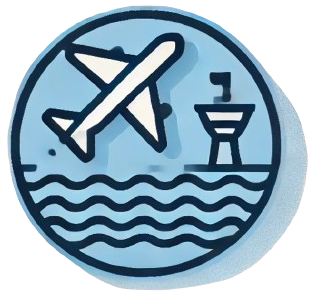The aviation industry’s safety records
The aviation industry’s safety records are notable, but there have been instances where severe weather has led to tragic consequences. One such case is LANSA Flight 508, which tragically crashed while navigating through a thunderstorm in Peru. When storms rage, the challenges they pose to aircraft become daunting, leading to questions about the capabilities of modern aviation in such conditions.
The LANSA Flight 508 Incident
On 24 December 1971, LANSA Flight 508, a Lockheed L-188A Electra turboprop, encountered a severe thunderstorm during its flight from Lima to Pucallpa, Peru. The turbulence and dangerous weather conditions proved to be overwhelming, and ultimately led to the loss of the aircraft and the lives of all 91 people on board, including six crew members. This catastrophic event highlighted the extreme risks thunderstorms can pose to flights, particularly in areas where such weather is prevalent. The aftermath of this crash has influenced aviation safety regulations and procedures, pushing airlines to further enhance their weather avoidance strategies and protocols.
Understanding the Impact of Thunderstorms on Aviation
Thunderstorms present numerous hazards to aircraft, including:
- Turbulence
- Hail
- Wind shear
- Lightning strikes
Pilots are trained to recognize these dangers and often rely on advanced weather radar and forecasting technology to avoid areas of severe weather. Most commercial aircraft are equipped to handle turbulent conditions; however, when confronted with violent storms, even the most state-of-the-art planes must exercise caution. The LANSA tragedy serves as a reminder of the unpredictability of thunderstorms and the importance of air traffic control and meteorological data in ensuring flight safety.
Lightning Strikes and Aircraft Safety
A common myth surrounding aviation and thunderstorms is the fear of lightning strikes. In fact, aircraft are designed to withstand being struck by lightning without suffering serious damage. The National Weather Service indicates that planes frequently initiate lightning strikes because their presence enhances electric fields in stormy weather.
| Statistic | Value |
|---|---|
| Frequency of lightning strikes per year for commercial airliners | Approximately 1-2 times |
| Frequency per 3,000 flight hours for an individual aircraft | Roughly once every 3,000 hours |
When lightning does strike, it typically travels along the exterior of the plane and exits through the tail, leaving passengers and crew unharmed and able to continue their journey.
The Future of Weather-Resilient Aviation
As technology advances, the aviation industry continues to prioritize safety in adverse weather conditions. Modern aircraft are being equipped with enhanced weather detection systems and materials that further mitigate the risks posed by thunderstorms and lightning. Airlines and regulatory bodies invest in extensive research to improve pilot training, automate weather data analysis, and develop systems that increase the situational awareness needed to navigate severe weather safely.
In conclusion, while the tragic incident of LANSA Flight 508 emphasizes the potential hazards of thunderstorms, ongoing advancements in aviation technology and stringent safety measures aim to reduce such risks. Understanding the capabilities and resilience of aircraft in the face of nature underscores the progress the aviation industry has made toward ensuring safe and reliable air travel.
